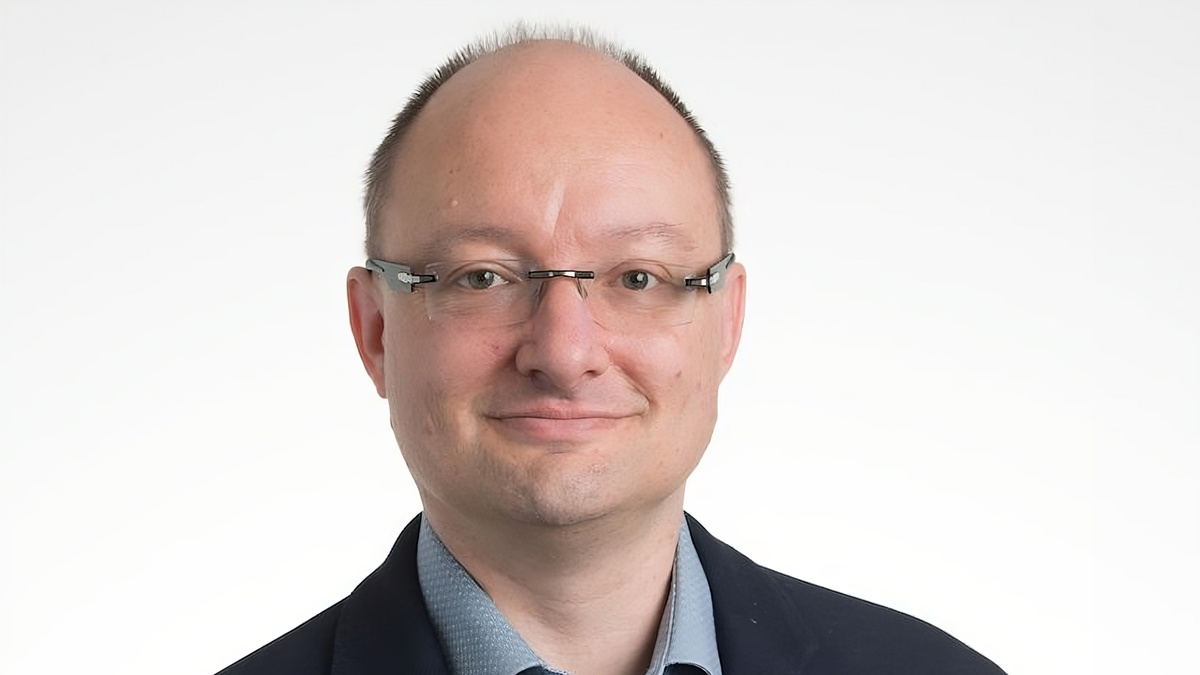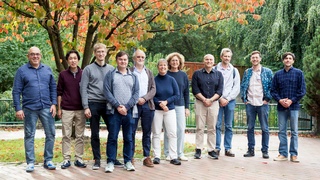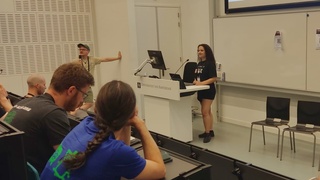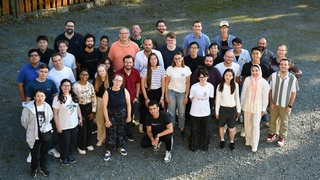 © TU Dresden
© TU Dresden
January 8, 2025
“Artificial Intelligence is More than just ChatGPT”
Many people automatically think of machine learning when hearing the words artificial intelligence (AI). Currently, systems are predominating which identify patterns in huge volumes of data – this is the principle upon which ChatGPT is based. However, this approach is of no use when problems need to be solved that require a deeper understanding and more complex conclusions. This can be achieved by so-called symbolic methods in AI. Professor Sebastian Rudolph from TU Dresden and the Konrad Zuse School of Excellence in Embedded Composite Artificial Intelligence (SECAI) explains how these methods work and why it is ultimately worth combining both approaches. SECAI is supported by the DAAD with funding from the Federal Ministry of Education and Research (BMBF).
The field of computational logic is concerned with how logical deductive reasoning can be described in mathematical terms, and automated with the aid of suitable algorithms. Knowledge representation is about formally structuring the knowledge related to a particular area and storing it in a computer system. It can take various forms, including concrete fact-based knowledge, general background knowledge and operational knowledge. All this knowledge is then combined automatically to solve demanding tasks, such as responding to complex enquiries or dealing with planning problems. Logic-based knowledge representation is part of the field of symbolic artificial intelligence and is widely used in practice.
Since the huge success of ChatGPT, artificial intelligence is frequently equated with machine learning. Is this too simplistic a view?It’s true that public perception is primarily focused on machine learning just now. This is hardly surprising given the impressive advances in so-called sub-symbolic methods we have seen in recent years – especially in language and image processing. A small number of experts even now believe that symbolic methods will end up becoming superfluous. However, most are of the opinion that it will only be possible to combine the strengths and offset the weaknesses of the two worlds by integrating them. I am also convinced that artificial intelligence is more than just ChatGPT.
Can you give us an example of the strengths of symbolic methods?One key strength in my view is that symbolic methods can provide guarantees of their correctness and reliability. As a rule, it is even possible to prove mathematically that a symbolic method will solve a task correctly within a specific time. This is vitally important when dealing for example with safety-critical applications such as the automated planning of complex processes in industrial facilities or power plants. Such guarantees are much more difficult to obtain with sub-symbolic methods. And indeed, it is a well-known fact that language models such as ChatGPT have a tendency occasionally to “hallucinate”, that is to simply invent facts for which there is no real basis.
How important are symbolic methods when it comes to developing explainable AI?The term “explainable AI” emerged because people frequently ended up asking why AI systems arrived at particular judgements or decisions. It is often very difficult, especially with sub-symbolic AI models, to provide a comprehensible explanation of the outcome to the human user. Symbolic methods make it easier: the logical deductive reasoning chains they use to reach a result can be broken down into their individual stages to retrospectively explain the process.
If I have understood you correctly, it is ultimately about combining the strengths of different AI methods. This is also one of the areas focused on at the Konrad Zuse School of Excellence in Embedded Composite Artificial Intelligence (SECAI), where you teach.Combining symbolic and sub-symbolic methods is indeed a central focus at SECAI, as the word “composite” in the school’s name is intended to highlight. There are many similar terms used in the field, including “neuro-symbolic AI” and “bilateral AI”, which also indicates that the need to integrate the different approaches has been widely acknowledged. Parallels are often drawn here with decision-making processes in humans: symbolic methods correspond to a rational “head-based” approach to problem-solving, whereas sub-symbolic methods are more intuitive and based on “gut instinct”. Probably the best way forward – for both artificial and natural actors – is to combine the two!
Even the best algorithms are worthless if they don’t have any hardware to direct. How can they be put into practice?The fact that SECAI also includes the hardware side in its considerations – that’s what the word “embedded” in the name refers to – is what sets the Zuse School apart. This is the natural result of the technical excellence of the participating universities in this field and the importance of the “Silicon Saxony” region for German and European chip production. To put it in very general terms, the growing demand for time- and space-saving – not to mention energy-efficient – AI systems requires constant improvements and advances in terms of hardware. This encompasses everything from new kinds of switching elements on the nano scale to innovative mainframe computers that can process more and more data and processes in parallel. SECAI works on this entire spectrum of different aspects.
Developments in AI are highly dynamic, which must surely make the training of future experts very demanding. Are there certain core skills that students can be taught – irrespective of the detailed aspects that are changing so rapidly just now?All branches of AI require a solid mathematical foundation – discrete mathematics in the case of symbolic methods, while sub-symbolic methods require vector algebra and analysis. Probability calculus and statistics are very important in both cases. In addition, students need a good basic grasp of computability and complexity theory and of algorithmics. Armed with this technical expertise that is taught in the first few semesters, students can understand the frequent and considerable changes in the approaches to and optimisation of AI methods quite easily and quickly. Specialist lectures and seminars then go into further detail.
Interview: Klaus Lüber (3 December 2024)
About Prof. Sebastian Rudolph
Sebastian Rudolph has been professor of computational logic at Technische Universität (TU) Dresden since April 2013. He is also the managing director of the Institute of Artificial Intelligence at the Faculty of Computer Science. Additionally, Professor Rudolph is a member of the Advisory Board of the Konrad Zuse School of Excellence in Embedded Composite Artificial Intelligence (SECAI). Within the framework of an ERC grant, Sebastian Rudolph is researching the issue of decidability in knowledge representation.
[Cited from press release of DAAD; “Artificial intelligence is more than just ChatGPT”]




